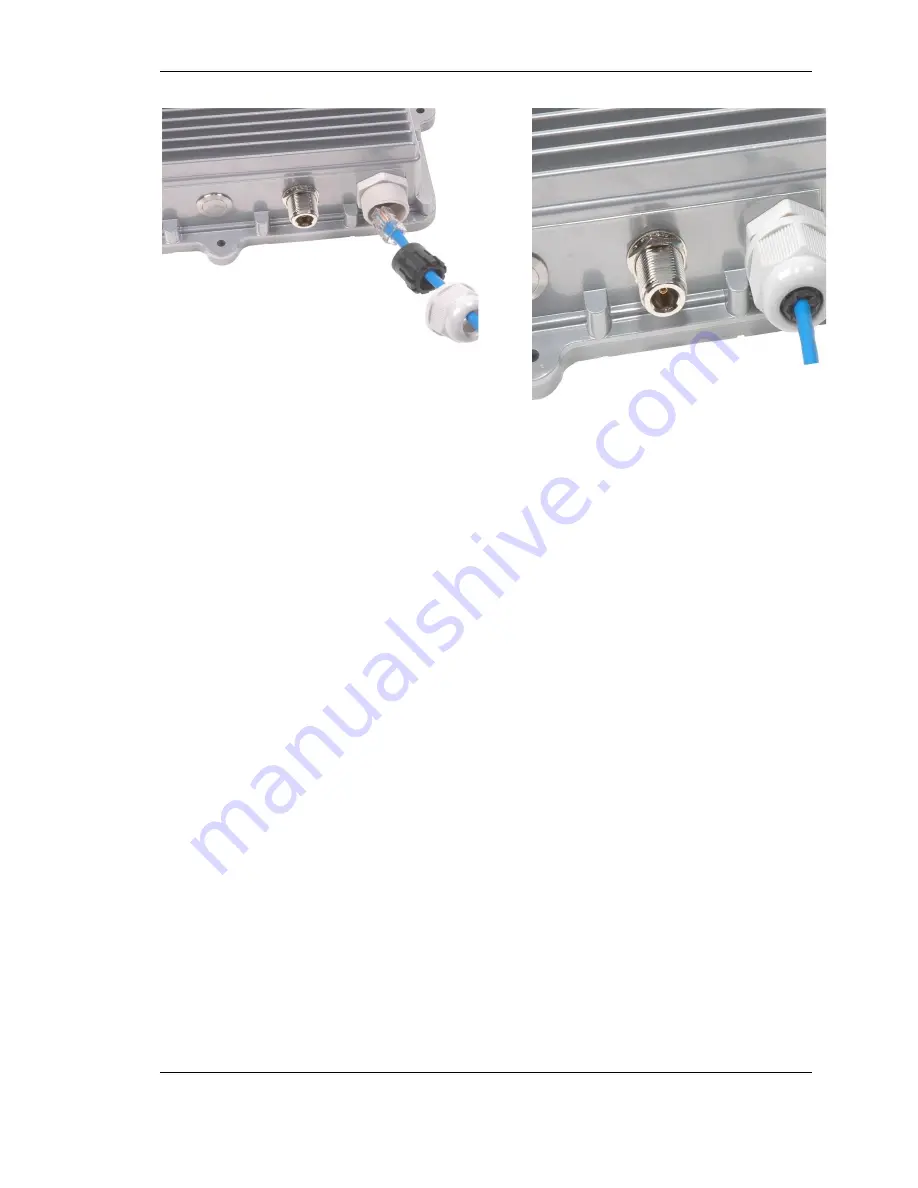
WAP-O3G User Manual
12
5.
Plug the other end of the Ethernet cable into the PWR+LAN OUT port of the PoE device.
Connect
a CAT5e cable from the LAN IN port of the PoE device to an Ethernet port on your Ethernet
switch.
6.
Plug in the PoE device’s AC cord into a power outlet. (See PoE injector manual for additional
instructions on completing the wiring at the PoE injector location.)
7.
With both Cat5e cables plugged in and the AC power connected, the WAP-O3G should be
powered. Verify operational status by checking LEDs on the PoE injector and/or the Ethernet
switch.
8.
In order to measure the signal strength, the WAP-O3G does not need to be hooked up to the
internet yet; it just needs to be powered up. Set the channel to the intended permanent
channel so that you can check for potential channel interference. If you have multiple WAPs,
consider changing the SSIDs to different names so that you can distinguish among the WAPs for
testing purposes.
9.
Take Signal-to-Noise Ratio (SNR) readings. We don’t recommend using signal meters from client
adapters or Windows XP as they tend to be inaccurate. If you don’t have a signal strength meter
utility, there are several free programs on the internet.
10.
During the SNR readings, keep in mind the quality and sensitivity of the client adapter (laptop
wireless card). Some client adapters have strong power transmission and receiver sensitivity
and will achieve high readings. If, however, you use a client adapter with less performance, you
might not be able to connect to the wireless networks in the same locations. As a rule of thumb,
your SNR readings should be more than 30 wherever you want a wireless connection.
11.
During the SNR readings, identify any neighbors’ access points and locations. Rough locations
can be determined by changes in SNR. Also, note the channels on which they are transmitting.
Use at least three channels of separation to avoid interference.













































